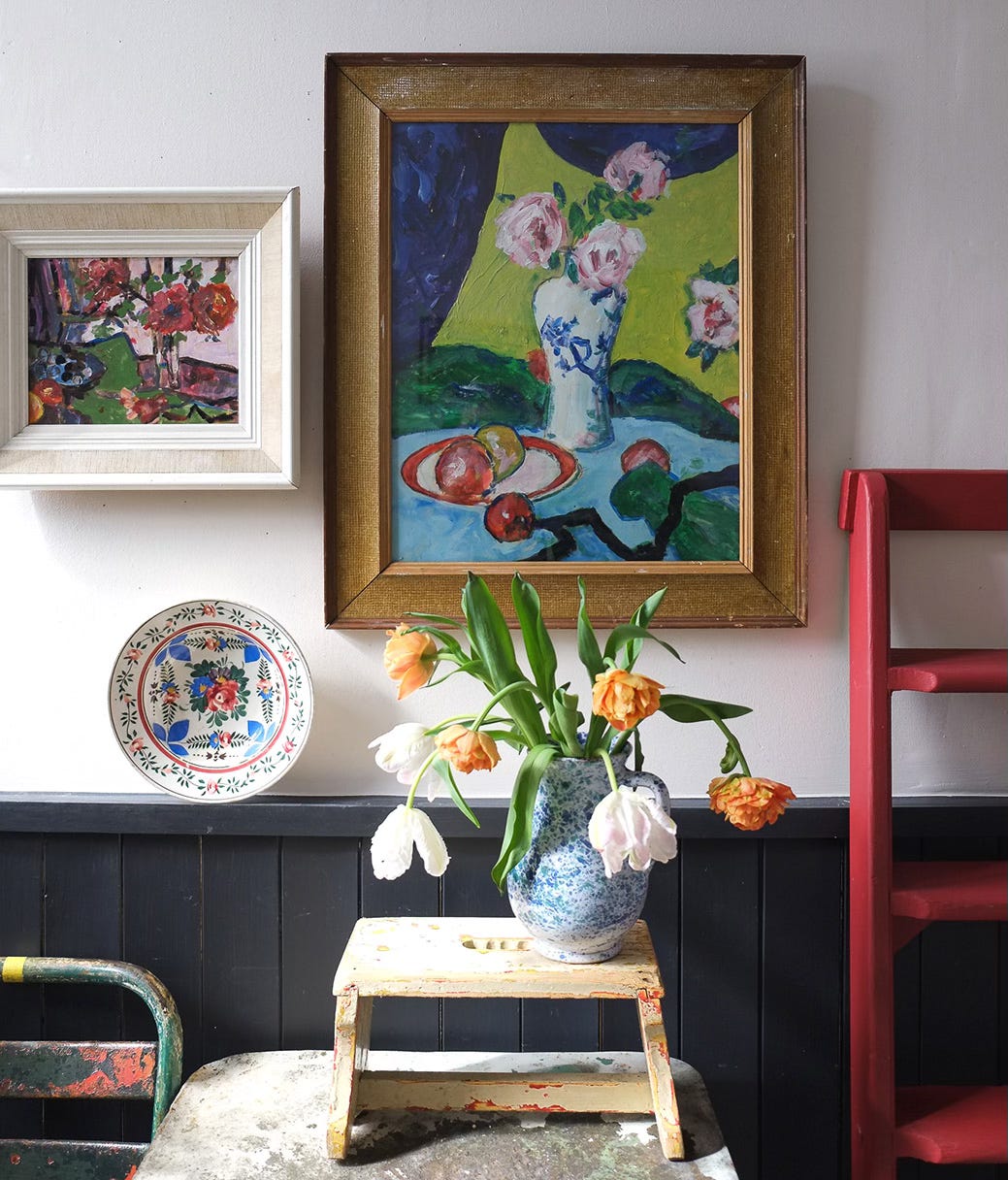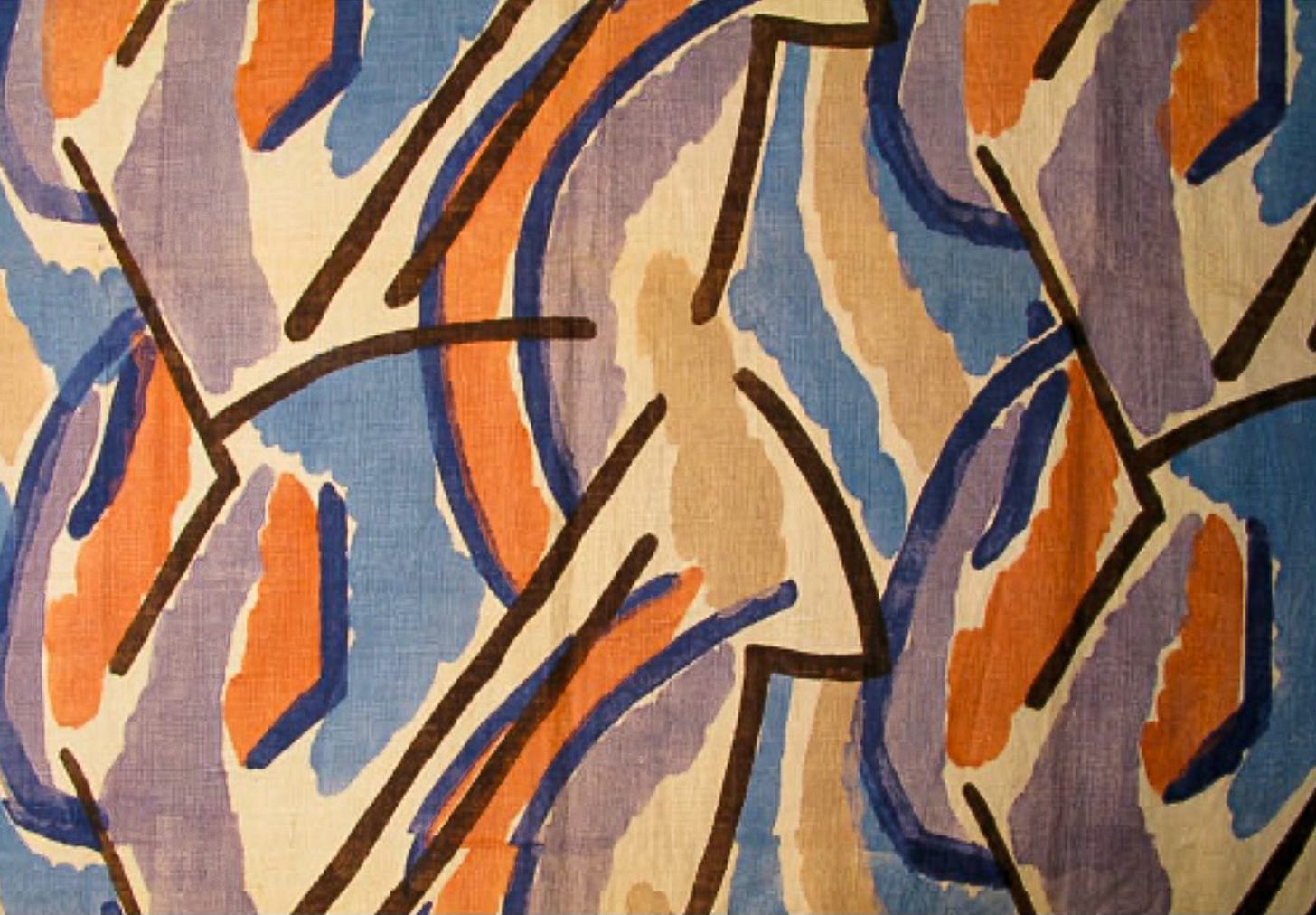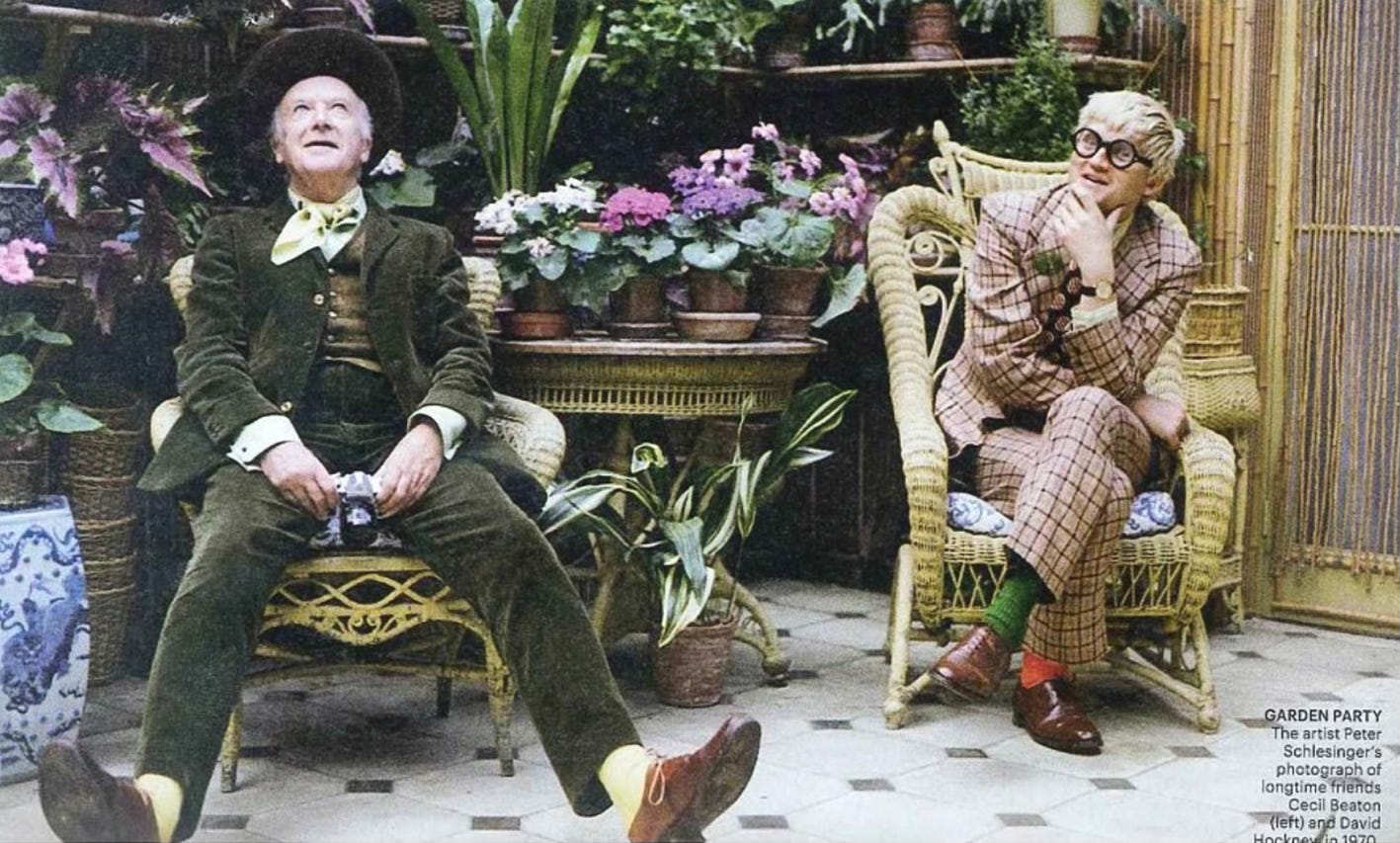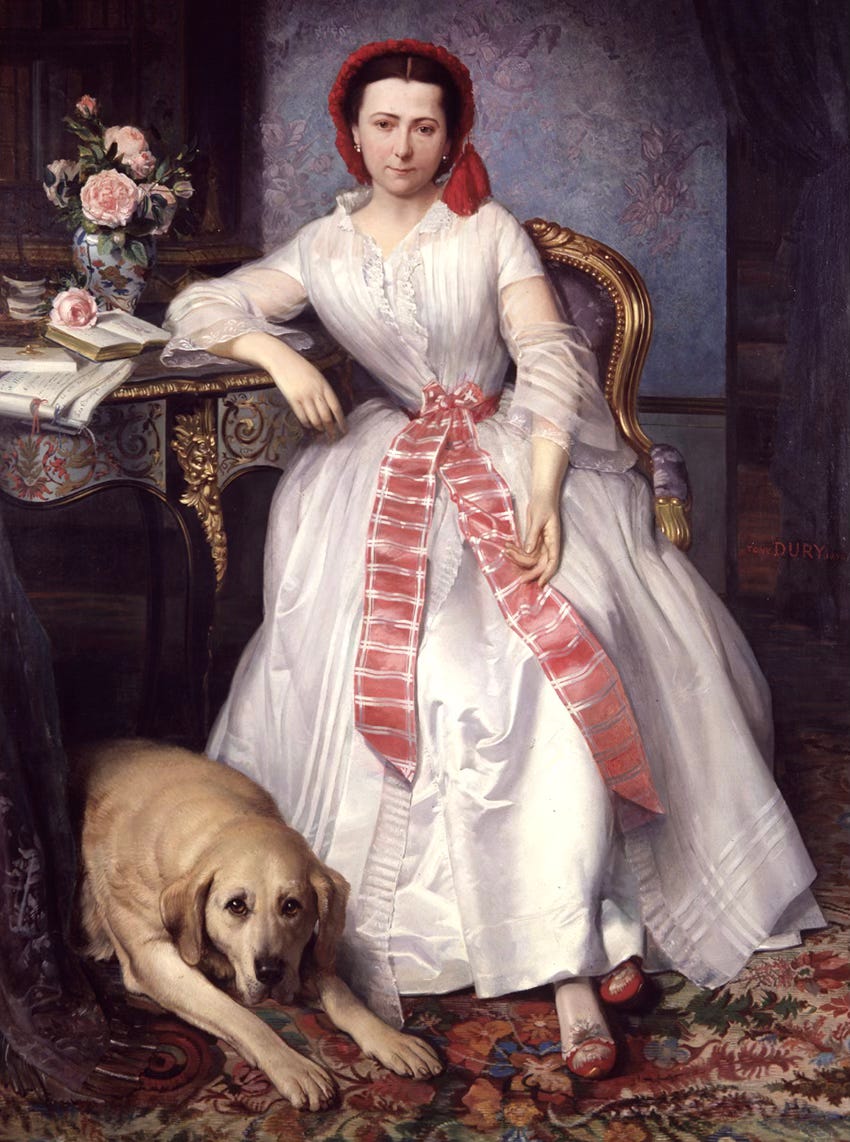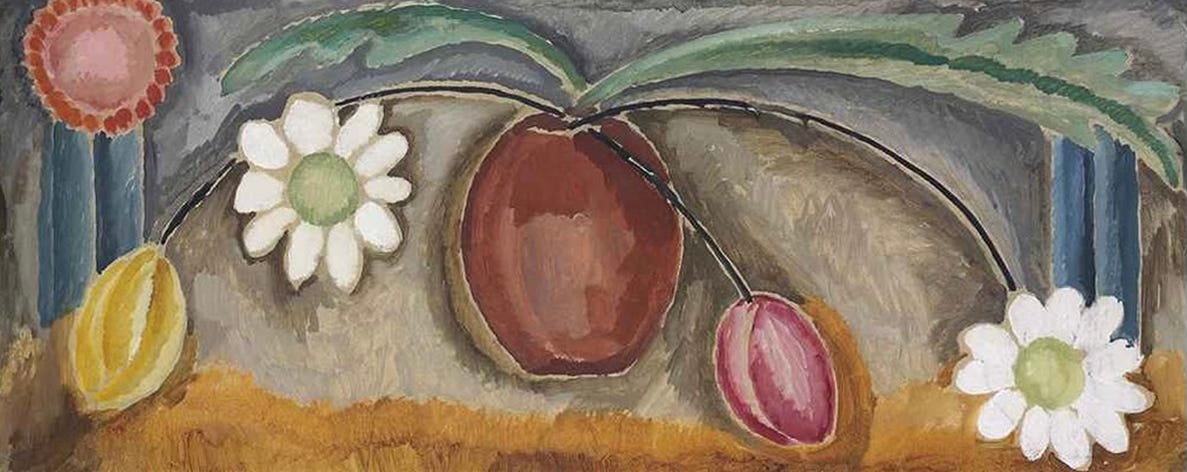The Omega Workshops: how a group of artists inspired 20th century design
Design Influencers: Part 1
Design pioneers
The Omega Workshops were founded in 1913 by Bloomsbury Group member and artist Roger Fry as an experimental design collective. It was Fry’s idea to combine the bright colours and bold simplified forms of modern art and to form a bond between the fine arts and decorative art.
Established at 33 Fitzroy Square, a stones throw from Bloomsbury Square in the heart of Bohemian London, Fry co-founded the workshops to help his artist friends and support their careers as designers, artists and makers. The range of products on offer included furniture, rugs, textiles, fashion, ceramics and painted murals. The Fitzroy Square address hosted artists studios and two showrooms where customers were invited to view the range or commission artwork.
As director of the workshops Fry invited his Bloomsbury Group friends Vanessa Bell and Duncan Grant to contribute and in 1915 Bell made a popular addition to the business by using Omega prints to create dressmaking fabric. She also produced murals and painted furniture and Grant provided ideas for interior design as well as pottery and set designs for theatre. Fry designed fabrics including the Pamela print (first image) as well as ceramics and furniture. He regularly visited art galleries in order to commission other young artists including Nina Hammett, Paul Nash, Wyndham Lewis and Winifred Gill (image above).

A breath of fresh air
Omega presented a collective of forward thinking creatives whose work and anti-establishment approach challenged the traditional, often staid Edwardian ideals of the previous decade. With bold colours, patterns and abstract designs Fry and his colleagues offered a radical approach to interior design, furniture production and homewares with a new found freedom of expression. Over a century later their work continues to inspire designers, artists and makers.
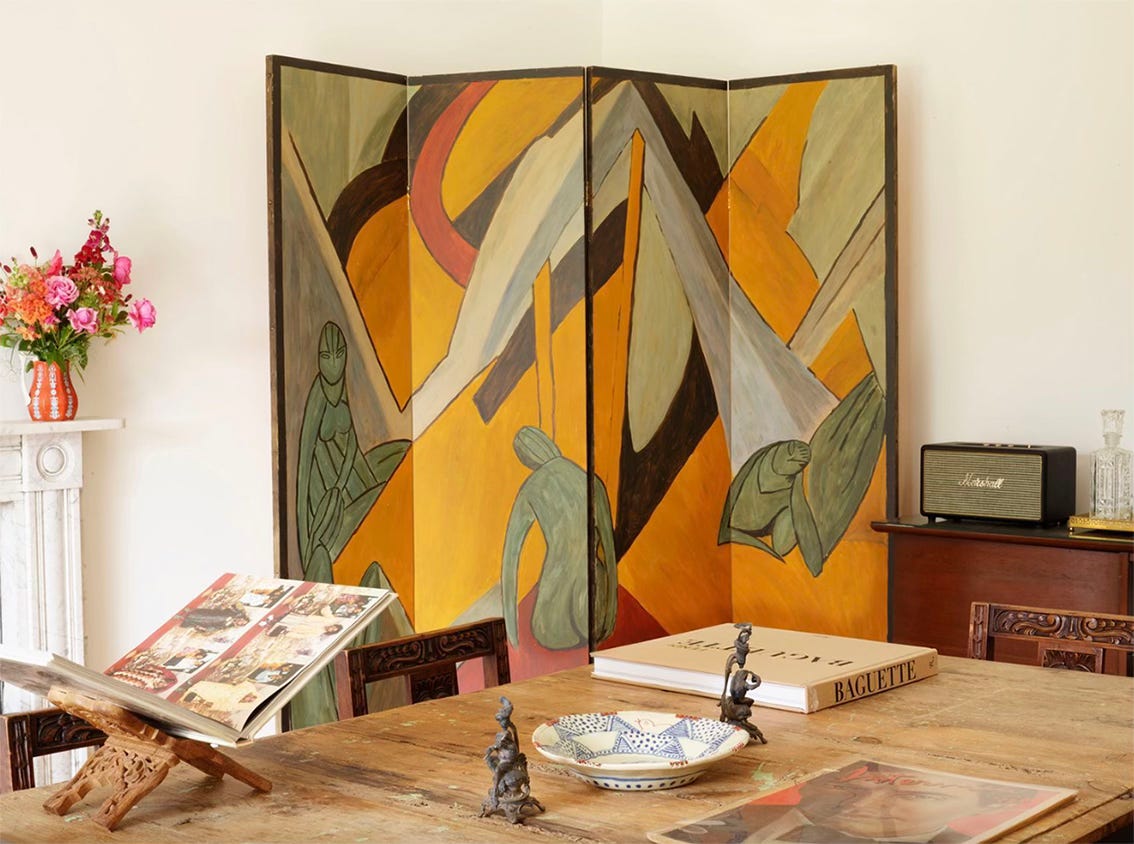
Design legacy
Despite many high profile patrons including Virginia Wolf, EM Forster, Gertrude Stein and Clive Bell the workshops struggled to make a profit. It suffered a further blow when an internal dispute, with several artists including Wyndham Lewis, accused Omega of misrepresenting their work at the Ideal Home Exhibition. In 1919 Fry held a clearance sale of stock and the Omega Workshops eventually closed in 1920.
During it’s seven year life-span the workshops produced some of the most important art and design of the 20th Century and went on to inspire many next generation ceramicists, designers and artists including Eric Ravilious, Eric Bawden, Enid Marx (A Transport for London fabric designer) and beyond.


Get the look
Bold colours and sweeping abstract patterns made popular by Omega Workshops designers continue to inspire - from contemporary ceramics to fabric designs, fashion and fine art - the influence is enduring. Here’s a look a some current favourites…
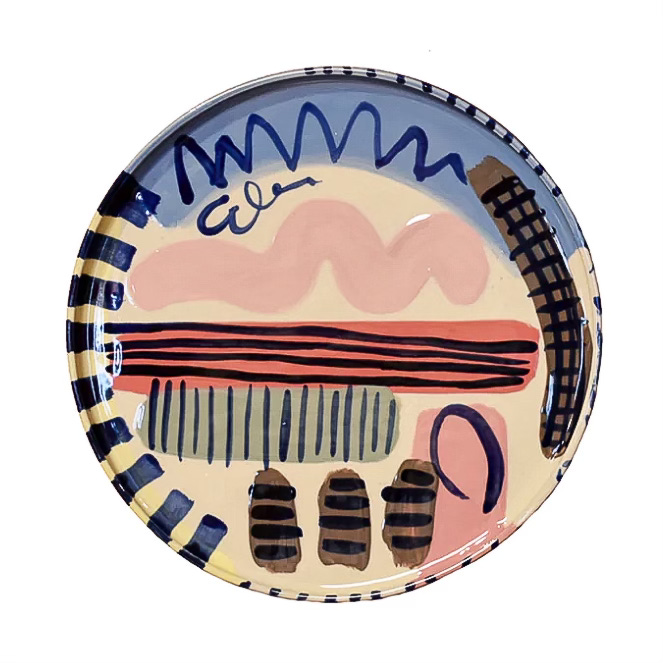
Reminiscent of the colours and abstract paintings by Duncan Grant and Vanessa Bell these bespoke ceramic plates by Kate Sellers are available through The Courtauld Shop. The rug below, available online at Christopher Farr, is reproduced from a design attributed to Duncan Grant or Vanessa Bell using original artwork held at the Courtauld Gallery’s Collection, London.
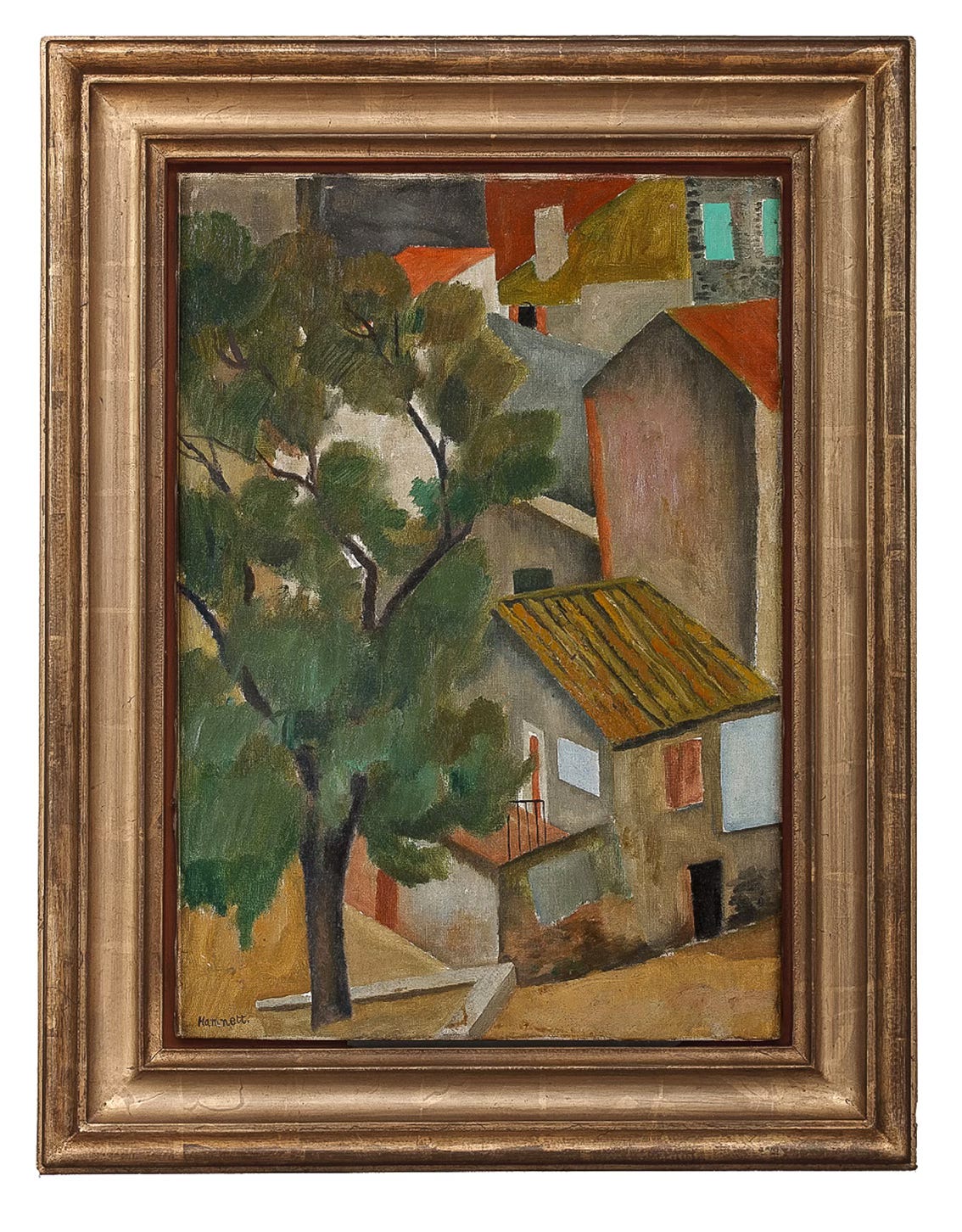
Further reading: Bloomsbury and the Omega Workshops 1913-19
What to see in May: Cecil Beaton’s Garden Party
Artist, set designer, costume designer and one of the most inspiring fashion photographers of all time, including official photographer to the Queen: Cecil Beaton is celebrated with a new show at The Garden Museum, London. Cecil Beaton’s Garden Party explores the “common thread weaving through Beaton’s work: gardens and flowers” and opens on 14 May.
Through costume design, photographs, drawings and paintings the exhibition looks at the role flowers played in Beaton’s life and their influence in his work and creations. It highlights details from his own lavish garden, his parties and the sets he created for fashion backdrops, royal portraits and floral costumes for stage and screen, most famously for the 1958 production of My Fair Lady.
Cecil Beaton’s Garden Party: 14 May - 21 Sep 2025, The Garden Museum, entry £15. Lambeth Palace Road, London, SE1 7LB.
From Joséphine Bowes: Trendsetters and Trailblazers
The Bowes Museum in County Durham is celebrating the pioneering spirit and 200th anniversary of collector and museum co-founder, Joséphine Bowes. The exhibition showcases three centuries of eclectic art and craft from across the museum’s collection and includes major loans from the UK, Europe and United States.
Featured artists include Pablo Picasso, Grayson Perry, Joy Labinjo and Lucy Waters. Trendsetters and Trailblazers explores Joséphine’s innovative approach to collecting, her knack of recognising the trends of the time and reflects on how her vision continues to inspire artists today. The Bowes Museum, Newgate, Barnard Castle, County Durham DL12 8NP. To 29 June 2025.
Exhibitions around the UK
Vanessa Bell: A World of Form & Colour. Charleston in Lewes, Southover Road, Lewes, BN7 1FB. Until 21 September 2025. Details
The World of James VI & I. National Galleries of Scotland, 1 Queen Street, Edinburgh, EH2 1JD. Until Sun 14 Sep 2025. Details
Austen and Turner: A Country House Encounter. Harewood House Leeds. Until 19th October. Details
Thank you for reading Love Vintage Etc. Your support means a lot and I’d love you to leave a comment. Until next time, Michelle x
PS If you’ve enjoyed this post please give it a like on the little ♥️ - it helps to make it more visible. Thank you x
You might like…
The best 1970s interior styles
I’m kicking off this first interiors episode with a look at the 1970s. Or should I say cherry picking the best bits - the decade still attracts bad press, especially where fashion and interior style is concerned - but for all the bad bits there’s lots to love.
